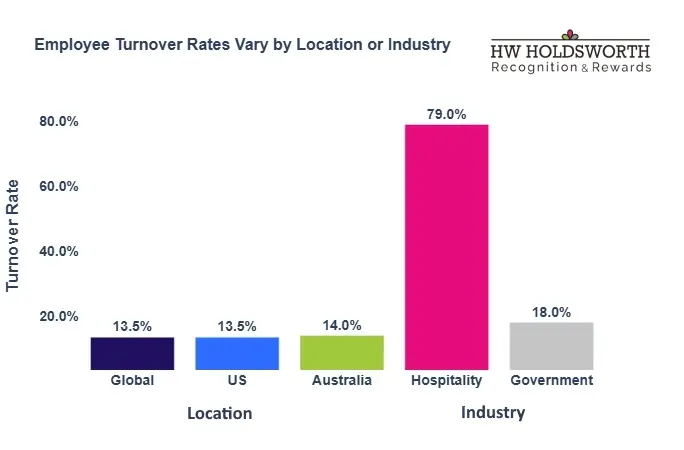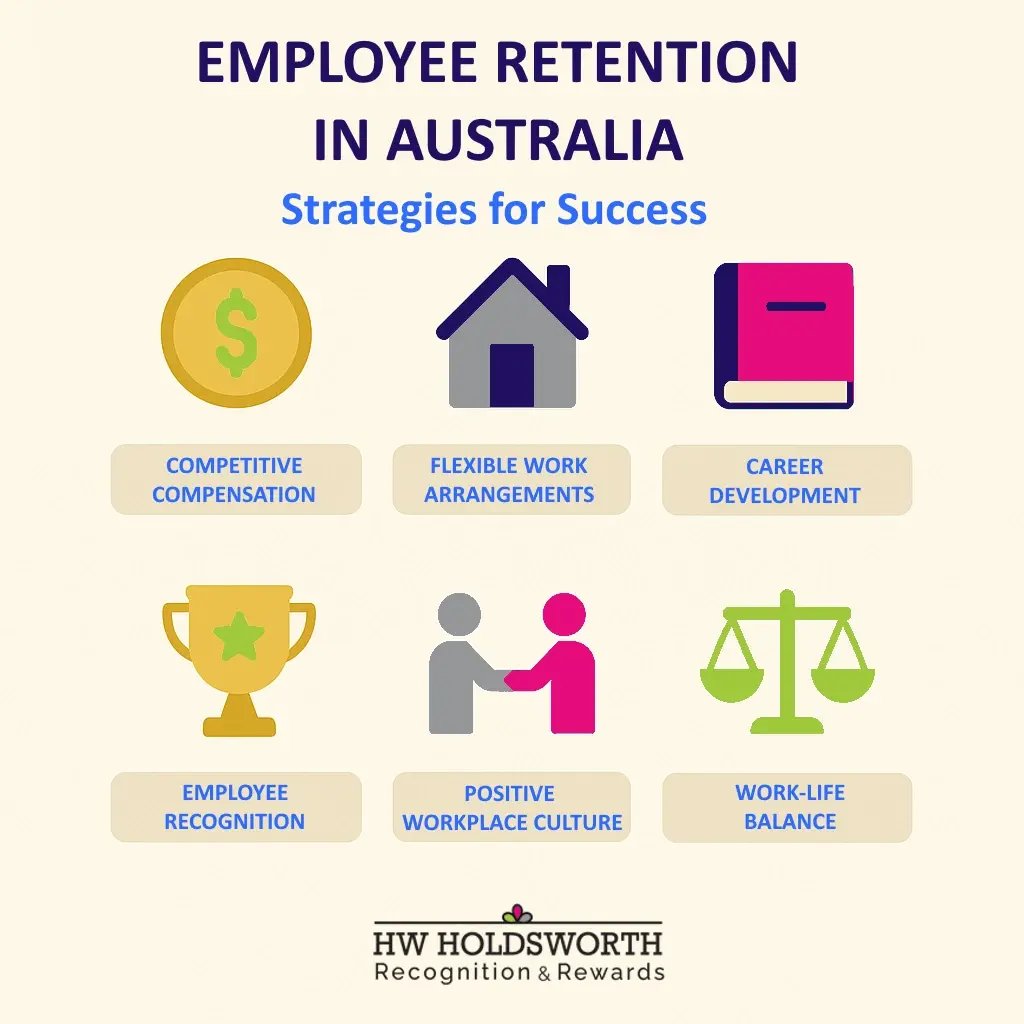Employee Retention
Employee Retention in Australia: Strategies for Keeping Top Talent
Employee retention is a growing challenge for Australian businesses, particularly in the face of rising job mobility and changing workforce expectations. With industries experiencing skills shortages and competition for talent intensifying, organisations are implementing strategic initiatives to improve employee retention.

Why Employee Retention Matters
High employee turnover is costly. According to the Australian HR Institute (AHRI), replacing an employee can cost up to 150% of their annual salary, factoring in recruitment, training, and lost productivity. Moreover, high turnover can impact workplace morale, disrupt team cohesion, and reduce overall efficiency (Australian HR Institute, 2023). Calculate how much you can save on employee turnover with our employee recognition program ROI calculator.
Key Employee Retention Strategies Used by Australian Businesses

Employee Recognition and Engagement
A culture of appreciation enhances job satisfaction and loyalty. Companies use:
-
Regular recognition programs, such as Employee of the Month awards.
-
Peer-to-peer recognition platforms.
-
Celebrations of employee achievements and milestones (Gallup, 2023).
Competitive Compensation and Benefits
Offering competitive salaries and benefits is fundamental to retaining employees. Australian companies are increasingly providing:
- Salary benchmarking to ensure pay rates remain competitive.
- Performance-based bonuses and incentives.
- Employee benefits such as health insurance, wellness programs, and childcare support (Deloitte, 2023).
Postive Workplace Culture
A supportive and inclusive culture is essential. Australian employers focus on:
-
Encouraging diversity and inclusion initiatives.
-
Providing mental health support and resources.
-
Creating open communication channels between employees and leadership (Diversity Council Australia, 2023).
Work-Life Balance Initiatives
Overworked employees are more likely to leave. Businesses combat burnout by:
-
Enforcing reasonable workloads and clear job expectations.
-
Encouraging employees to take annual leave.
-
Implementing wellness initiatives such as gym memberships and mindfulness programs (Safe Work Australia, 2023).
Career Development Opportunities
Employees are more likely to stay when they see opportunities for growth. Australian businesses are investing in:
-
Professional development programs and upskilling.
-
Leadership training and mentorship opportunities.
-
Tuition reimbursement for further education (LinkedIn Learning, 2023).
Flexible Work Arrangements
Since the pandemic, flexible work has become a major factor in job satisfaction. Businesses that allow remote work, flexible hours, or hybrid models have seen increased employee engagement and retention. Employers like Atlassian and Commonwealth Bank have adopted hybrid work policies to provide greater work-life balance (PwC Australia, 2022).
The Future of Employee Retention in Australia
Retention strategies will continue evolving as workforce expectations shift. Companies investing in employee experience, career progression, and work-life balance will likely have the best success in reducing turnover. By understanding and addressing employees' needs, Australian businesses can create environments where top talent chooses to stay and thrive.
Conclusion
Retaining employees requires more than just a competitive salary; it demands a holistic approach to workplace culture, flexibility, and growth opportunities. As the Australian job market continues to evolve, businesses that prioritise employee satisfaction will gain a significant competitive advantage.
References
-
Australian HR Institute. (2023). The cost of employee turnover in Australia.
-
Deloitte. (2023). Workplace benefits and retention trends.
-
PwC Australia. (2022). The future of hybrid work.
-
LinkedIn Learning. (2023). Employee training and development in Australia.
-
Gallup. (2023). Workplace engagement trends.
-
Diversity Council Australia. (2023). Inclusion strategies for Australian workplaces.
-
Safe Work Australia. (2023). Workplace well-being and mental health initiatives.
